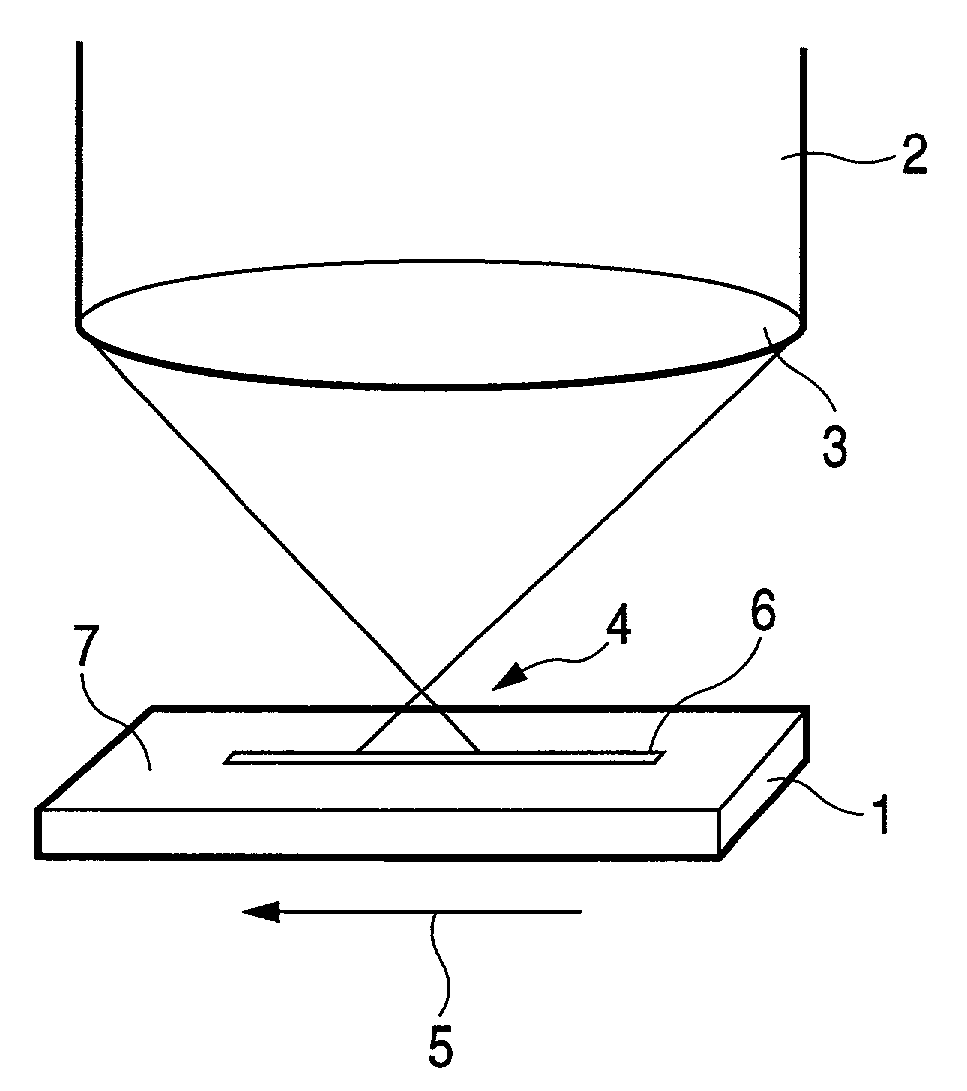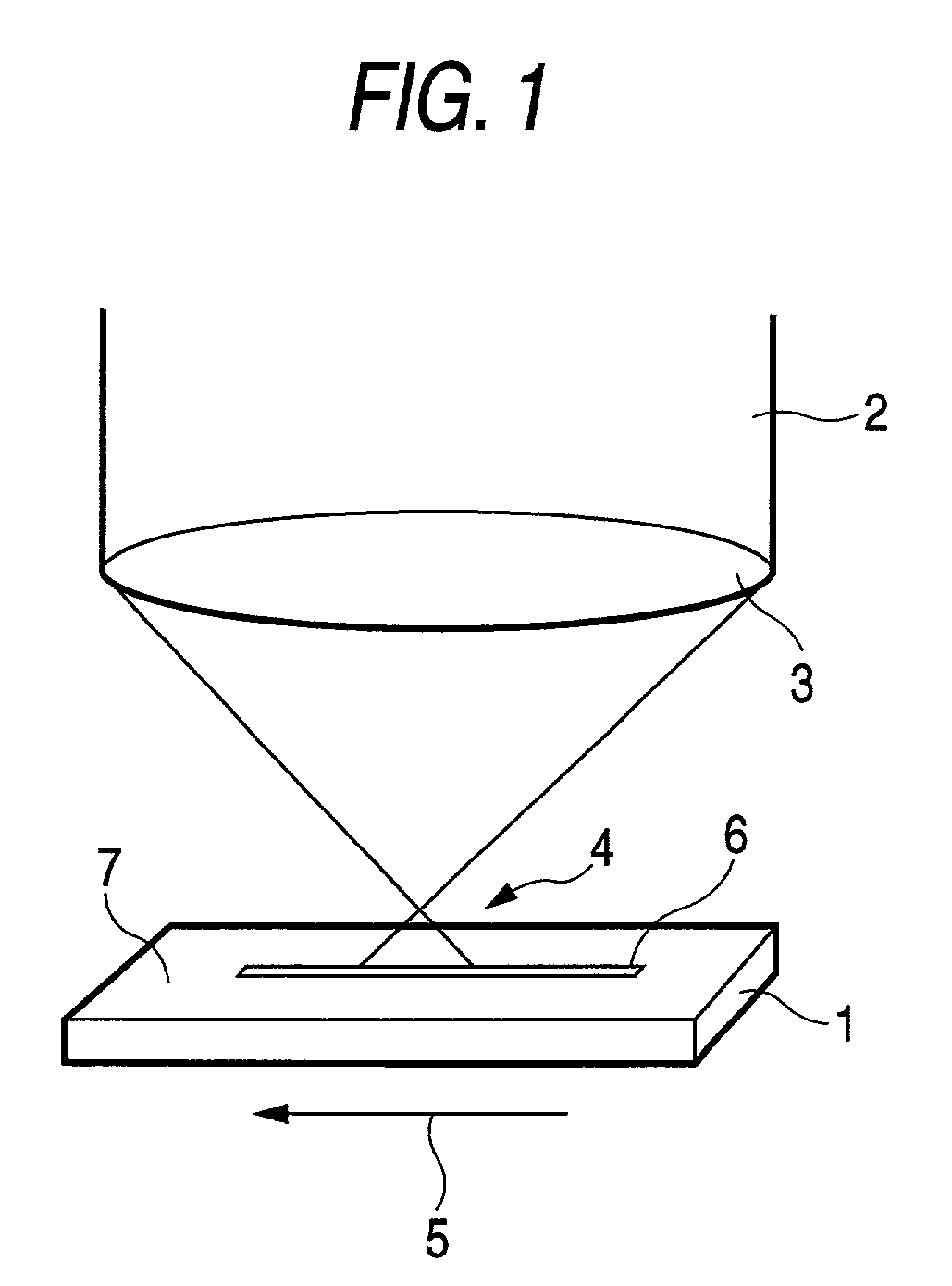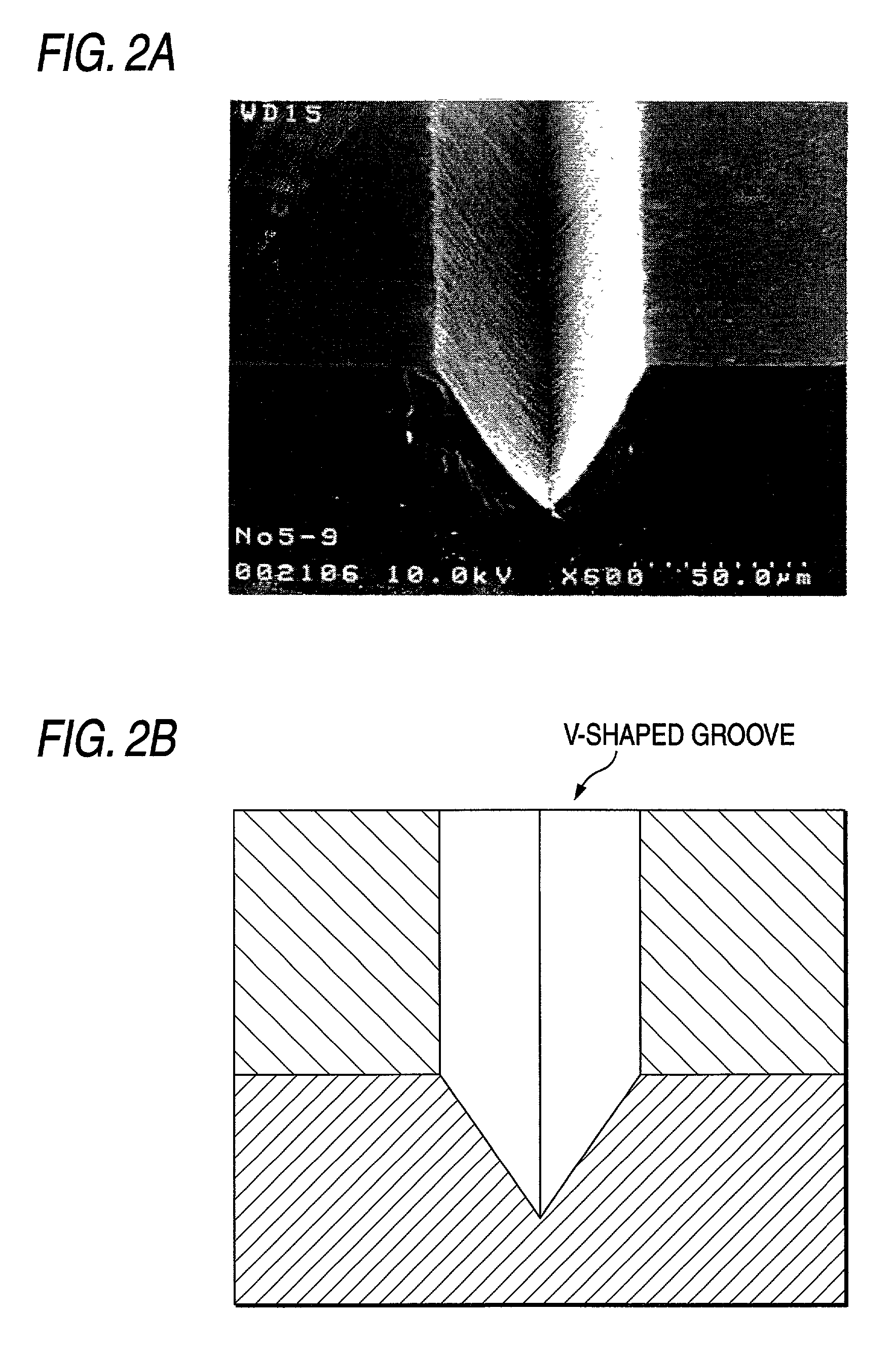Method for machining glass substrate
- Summary
- Abstract
- Description
- Claims
- Application Information
AI Technical Summary
Benefits of technology
Problems solved by technology
Method used
Image
Examples
embodiment 1
[Embodiment 1]
[0029]A plate-like glass substrate having a composition shown in Table 1, having a value of 89.2×10−7° C.−1 as a mean thermal expansion coefficient at a temperature of 0° C. to 300° C. and having a size of 20 mm×30 mm×2 mm was irradiated with a pulsed laser beam 2 condensed by a lens 3 as shown in FIG. 1. As the pulsed laser beam 2, there was used a laser beam which had a pulse width of 100 femtoseconds, a repetition frequency of 1 kHz, a wavelength of 800 nm and a mean output of 950 mW and which was oscillated by an argon-laser-excited titanium-sapphire (Ti:Al2O3) laser (not shown). After the laser beam was transmitted through an ND filter so as to be adjusted to have 500 mW intensity, the laser beam was condensed by a ten-fold objective lens 3 with a numerical aperture (NA) of 0.3 and the focal position 4 of the laser beam 2 was adjusted so as to be located far by 150 μm outside and above a surface 7 of the substrate 1. A V-shaped groove 6 was formed while the substr...
embodiment 2
[Embodiment 2]
[0031]A V-shaped groove was produced by use of the same substrate material and the same laser beam source as those used in Embodiment 1 except that the focal position of the laser was changed so as to be located far by 125 μm outside and above the surface 7 of the substrate 1.
[0032]When the shape of the V-shaped groove formed was confirmed by a scanning electron microscope, the groove width W was 49 μm, the depth d was 67 μm, and the angle θ between the side surfaces 8 of the V-shaped groove was 40 degrees.
embodiment 3
[Embodiment 3]
[0033]A V-shaped groove was produced by use of the same substrate material and the same laser beam source as those used in Embodiment 1 except that the focal position of the laser was changed so as to be located far by 175 μm outside and above the surface 7 of the substrate 1.
[0034]When the shape of the V-shaped groove formed was confirmed by a scanning electron microscope, the groove width W was 53 μm, the depth d was 19 μm, and the angle θ between the side surfaces 8 of the V-shaped groove was 110 degrees.
PUM
| Property | Measurement | Unit |
|---|---|---|
| Length | aaaaa | aaaaa |
| Time | aaaaa | aaaaa |
| Angle | aaaaa | aaaaa |
Abstract
Description
Claims
Application Information
 Login to View More
Login to View More - R&D
- Intellectual Property
- Life Sciences
- Materials
- Tech Scout
- Unparalleled Data Quality
- Higher Quality Content
- 60% Fewer Hallucinations
Browse by: Latest US Patents, China's latest patents, Technical Efficacy Thesaurus, Application Domain, Technology Topic, Popular Technical Reports.
© 2025 PatSnap. All rights reserved.Legal|Privacy policy|Modern Slavery Act Transparency Statement|Sitemap|About US| Contact US: help@patsnap.com



